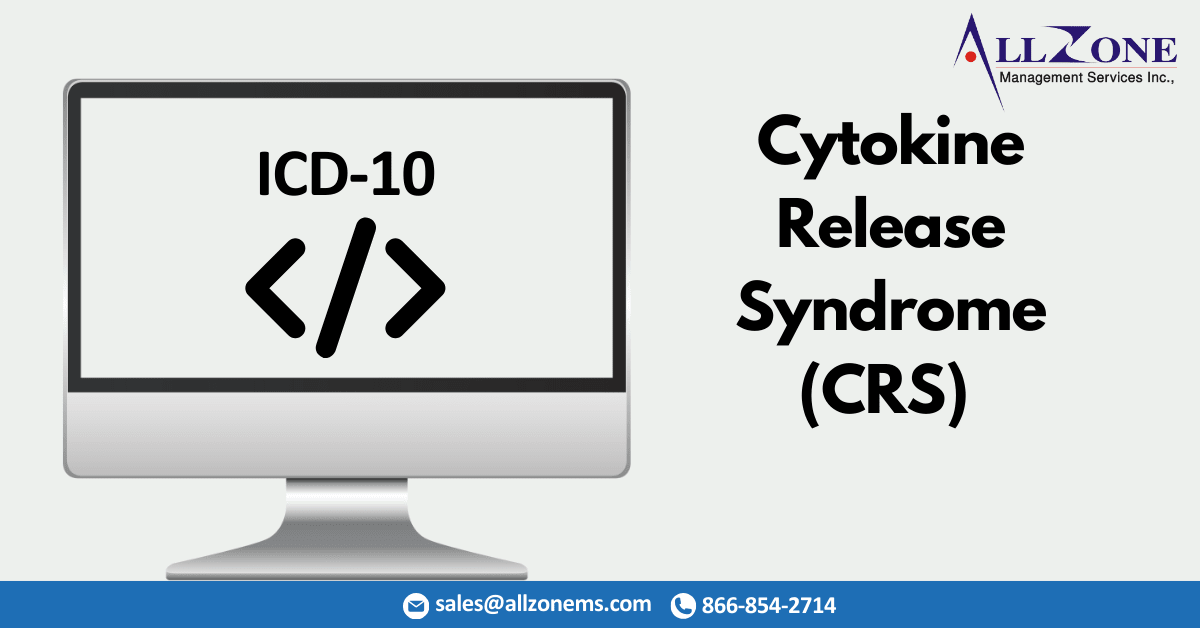Cytokine Release Syndrome (CRS) is a systemic inflammatory response that can occur due to infections, certain immunotherapies like CAR T-cell therapy, or other triggers that activate the immune system. Accurate coding of CRS, including the CRS ICD-10 Codes, is essential for proper documentation, billing, and treatment planning. Below are the relevant ICD-10 codes associated with CRS:
Symptoms of CRS and CRS ICD-10 Codes: Varying Severity and Key Indicators
- Confusion
- Fever
- Headache
- Nausea
- Persistent coughing
- Shortness of breath
- Vomiting
- Elevated or irregular heart rate
- Organ failure
- Precipitous drop in blood pressure
- Reduced lung function
- Seizures
CRS Grading System: Severity Levels and Clinical Management for CRS ICD-10 Code
To assist in clinical management, the American Society for Transplantation and Cellular Therapy has established a grading system for CRS based on severity:
-
- Grade 1: Fever (≥38.0°C)
- Grade 2: Fever, hypotension not requiring vasopressors, and/or hypoxia requiring oxygen by low-flow nasal cannula (≤6 L/min) or blow-by
- Grade 3: Fever, hypotension requiring one vasopressor (with or without vasopressin), and/or hypoxia requiring high-flow oxygen support (e.g., high-flow nasal cannula >6 L/min, facemask, or non-rebreather)
- Grade 4: Fever, hypotension requiring multiple vasopressors (excluding vasopressin), and/or hypoxia requiring positive-pressure ventilation
- Grade 5: Death due to CRS when no other principal factor is identified
ICD-10-CM Coding for CRS:
Below are the ICD-10-CM codes for CRS grades
- ICD-10-CM Code: D89.831, CRS; grade 1
- ICD-10-CM Code: D89.832, CRS; grade 2
- ICD-10-CM Code: D89.833, CRS; grade 3
- ICD-10-CM Code: D89.834, CRS; grade 4
- ICD-10-CM Code: D89.835, CRS; grade 5
- ICD-10-CM Code: D89.839, CRS; grade unspecified
Note: Grades 3–5 are considered complication or comorbidity conditions and may influence reimbursement and care plans.
ICD-10-CM Code Updates: Key Changes for Coders & Healthcare Providers:
The ICD-10-CM code updates, including the latest CRS ICD-10 Codes, are essential for medical coders and healthcare providers to stay compliant and ensure accurate billing. These updates reflect changes in medical diagnoses, including new codes, revisions, and deletions, which can significantly impact reimbursement and coding accuracy.
Medical coders need to familiarize themselves with the new codes and guidelines to avoid costly errors. The updates include modifications in categories such as infectious diseases, neoplasms, and chronic conditions, and are designed to enhance specificity in documenting patient conditions. Coders must also stay informed about changes in coding conventions, as they play a crucial role in accurate and timely claim submissions.
For healthcare providers, staying ahead of the updates, including the CRS ICD-10 Codes, ensures that they are reimbursed correctly and promptly, reducing the risk of claim denials and underpayment. Regular training on these changes, along with system updates, is crucial to maintaining compliance with payer requirements.
To help manage this transition, outsourcing ICD-10 coding services to experienced coding companies can streamline the process. These companies ensure that the latest codes are applied accurately, reducing the administrative burden on providers and freeing up resources for patient care. Timely updates and proper implementation can improve both operational efficiency and financial performance in healthcare organizations.

